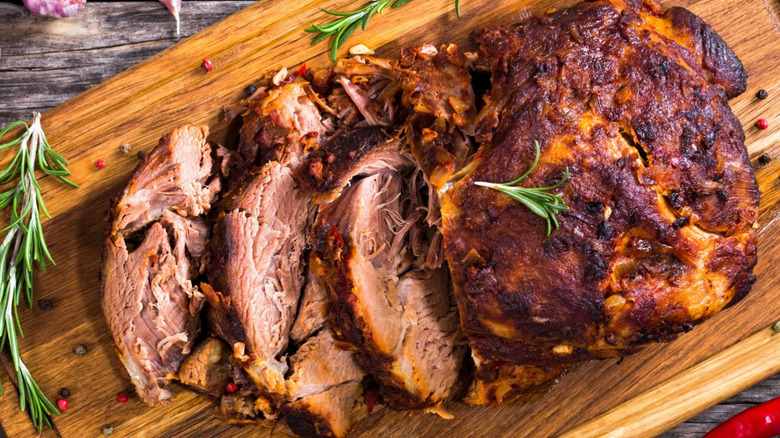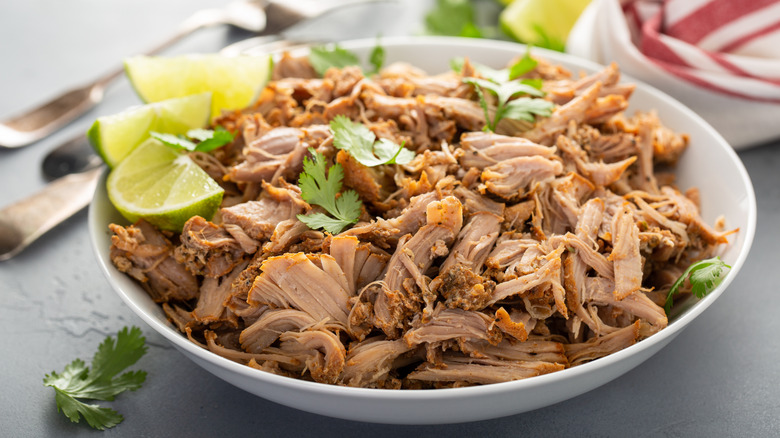Here's Why Pork Shoulder Is So Inexpensive
One of the primary benefits of pork shoulder is the meat's versatility. It can be roasted, braised, grilled, smoked, or slow-cooked, and it's suitable for a wide range of dishes, like pulled pork, pork carnitas, and pork barbecue. The meat's high fat content keeps it flavorful, even when cooking over long periods of time.
The shoulder of a pig can be broken down into different cuts, with the blade of the shoulder taken from the top, often referred to as "Boston butt," whereas the typical "pork shoulder" is taken from lower down, according to MasterClass. The blade is the cut of meat that is used for tender pulled pork, and comes from the upper section of the pig's shoulder. It's heavily marbled with fat and has a thick layer of skin over it, which creates perfect crackling. The amount of connective tissue in the cut means that it benefits from long, slow cooking with plenty of added moisture to ensure a succulent result that falls apart with ease. The fat in this cut also means that when slow cooked, the meat ends up rich and flavorful — hence why it pairs so well with barbecue sauce when making pulled pork.
Whether you have enough time to use your slow cooker or you need to speed things up with a pressure cooker, preparing pork shoulder through either method turns out beautifully thanks to the meat's versatility. But its versatility isn't why this meat is so inexpensive.
A pig's diet contributes to its price
Pork shoulder is one of the cheaper cuts of meat, says Leite's Culinaria. The national average price for this cut is just $1.39 per pound on the bone, or $2.45 per pound if it's boneless. According to Sweetish Hill, pork shoulder tends to be a cheaper cut when compared to loin or belly, since it's tough and fatty, but it's for these same reasons that it's perfect for slow cooking. When cooked right, pork shoulder will melt in the mouth and taste delicious.
What makes pork itself so cheap is the fact that pigs grow quickly, and on average, a sow will have a litter of 10 or more piglets at a time, per Carnivore Style. Because piglets grow fast and don't require copious amounts of nurturing, a sow will be able to be pregnant twice a year — that's a minimum of 20 piglets per year, per sow.
Another reason why pork is a cheaper alternative is that a pig's diet is entirely made up of leftover food scraps and foods that would normally be thrown away. Cows however, require a very specific diet of grains mixed with hay and corn silage. Drink Milk states that a cow spends 3-5 hours, eating up to 100 pounds of food, every day, racking up the cost for beef considerably.

